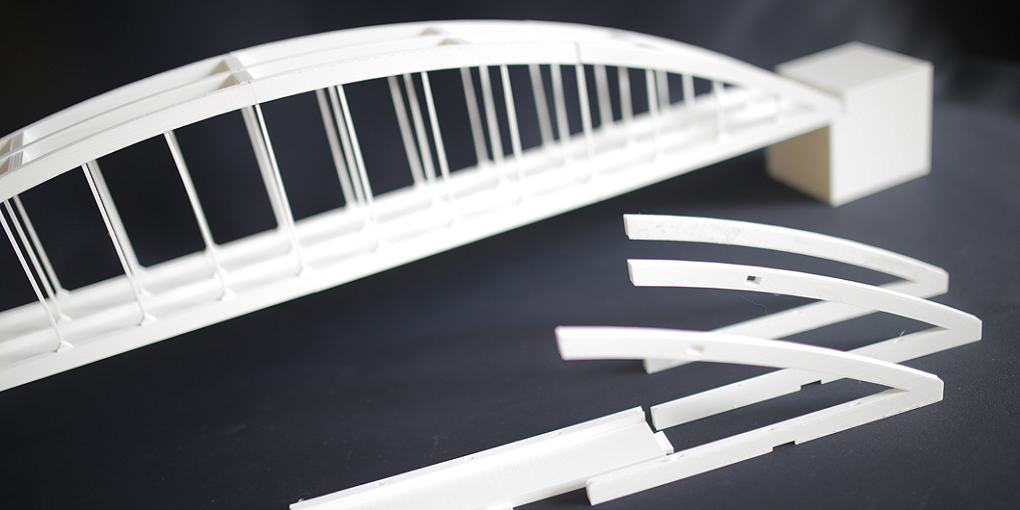And massive indeed was one of the latest projects used by architects to pull together a 2,000 ton bridge in Poland. This came to fruition thanks to a ZMorph 3D printer. We’ve followed ZMorph for quite some time now as they have as they have opened new 3D printing retail stores around the world, landed new investors, competed in the recent Startup Competition, and added new features for their interchangeable toolheads, including an integrated 3D scanner.
When Yellow Line Engineering (YLE), a Warsaw-based design and consultancy company founded in 2007 by Piotr Żółtowski, took on a recent and quite fantastic bridge design project, they turned to the team at ZMorph for help in choosing the proper 3D printing prototyping equipment.
Considering they were looking at constructing a structure 120 meters high and 21 meters wide (almost 400 x 70 feet), they had to factor in considerable size, along with challenges in terrain. To be built on a double-track railway from Gdańsk to Pruszcz Gdański, the bridge was to serve as a way to expand the shipping channel and the traffic going through.
Check out this video regarding the project:
“Instead of using more expensive and off-site manufacturing methods, engineers and designers use desktop 3D printers to iterate faster and perfect their projects without the need of outsourcing,” states the team from ZMorph, regarding their latest project. “The Yellow Line Engineering case study shows that despite desktop size, 3D printers like ZMorph are a great solution for large scale projects.”
While there is great evidence regarding transformations that 3D printing is offering to many different sectors, changes to the construction industry have been happening on a smaller scale. This project is a great example of how 3D printing offers all of its benefits in preplanning, allowing for speed and affordability in prototyping, as well as the ability to go back to the drawing board and make changes as needed.
What are your thoughts on the use of 3D printing for this complex project? Discuss in the 3D Printing and Bridges forum thread on 3DPB.com.
